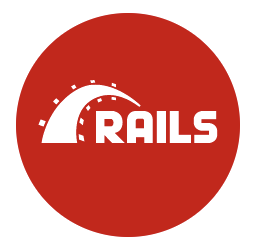 Deploying Rails 8 on Render.com
Deploying Rails 8 on Render.com
I’ve been using Heroku since 2015 - that’s 10 years of experience. However, over the years, new Platform as a Service (PaaS) providers have emerged that offer better value and pricing than Heroku. Most notably - Render.com.
Production Experience #
SupeRails.com has been running on Render for two years. The architecture is simple:
The setup is straightforward:
- A web server
- A PostgreSQL database
- A worker running ActiveJob with good_job on PostgreSQL
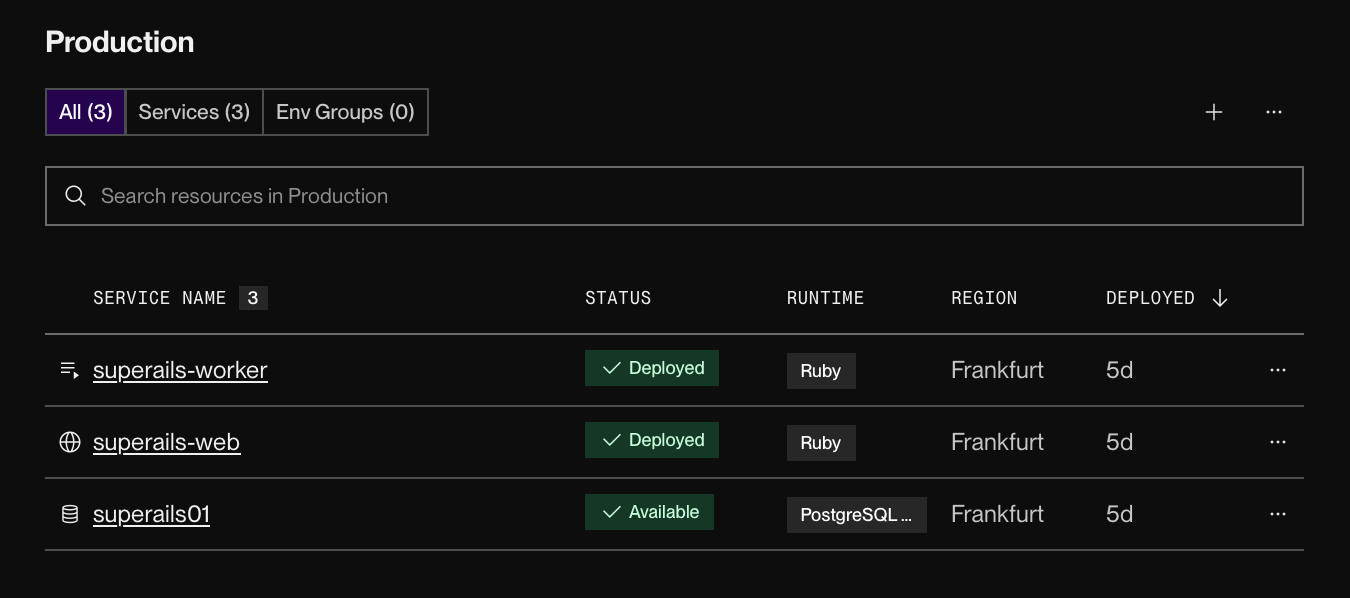
Current infrastructure costs $21/month and handles our workload efficiently.
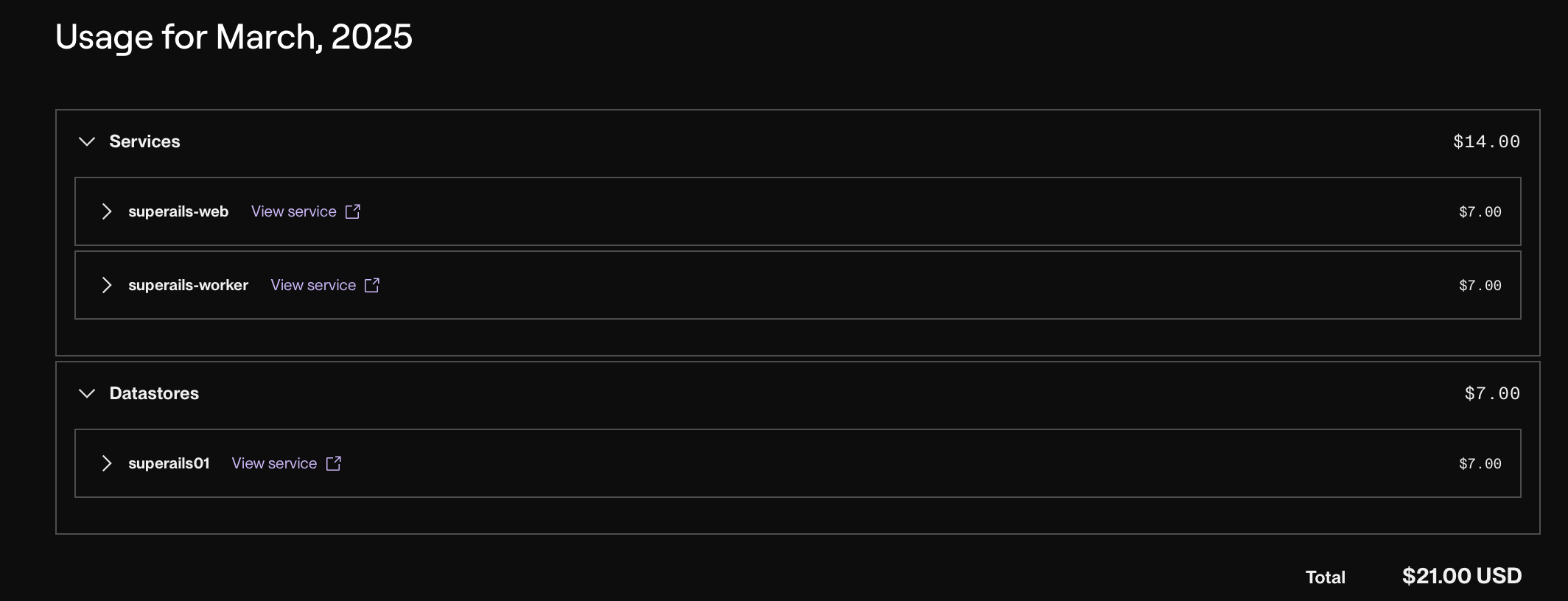
When I was deploying the app to heroku, I used jemallock to decrease RAM usage and headless chrome to take screenshots in a headless browser:

To use jemallock on Render, add ENV VAR:
LD_PRELOAD: /usr/lib/x86_64-linux-gnu/libjemalloc.so
You can also add buildpacks if you use Docker for deployment.
Rails 8 “No PaaS” #
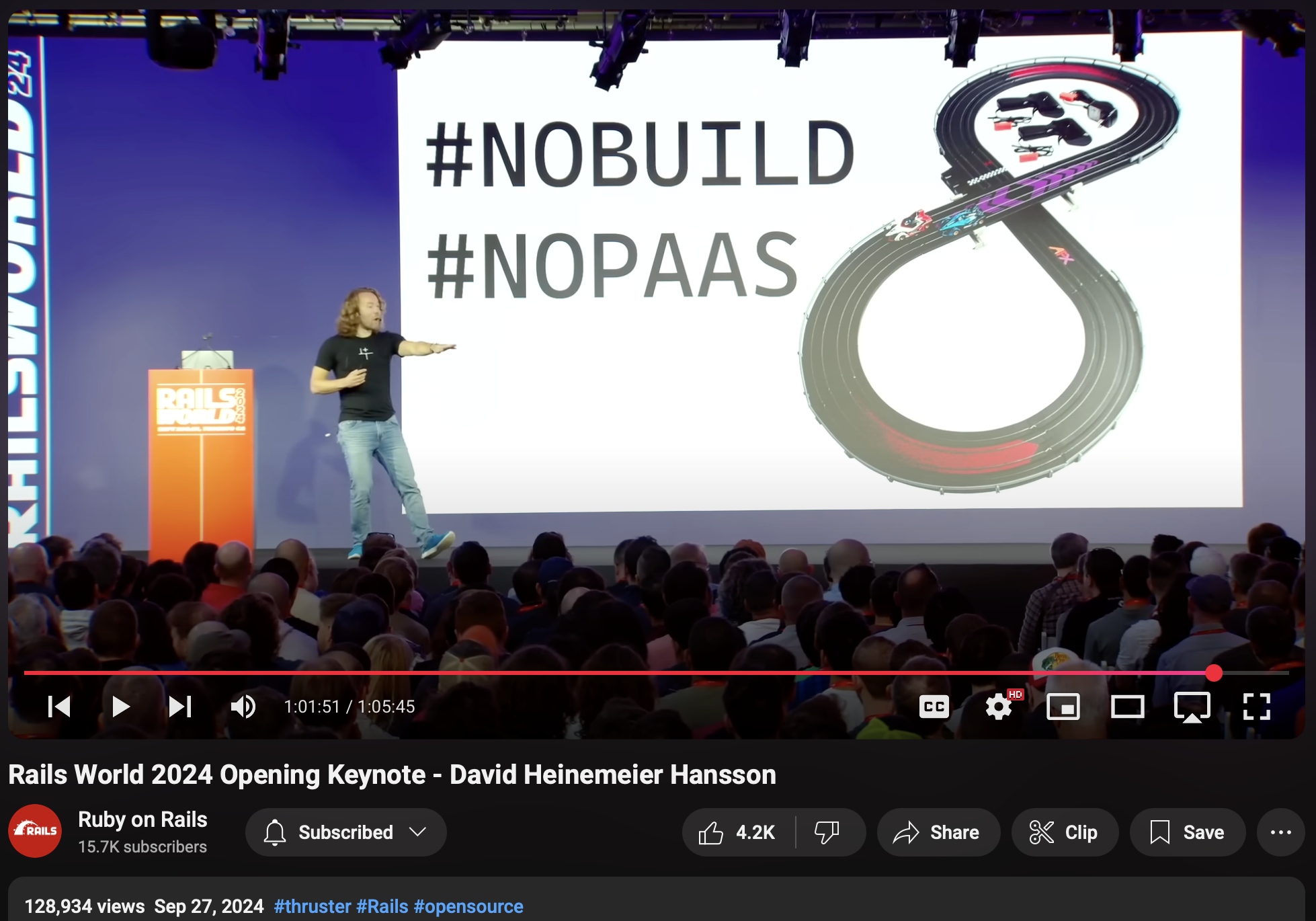
In his 2024 RailsWorld keynote, DHH introduced Kamal 2 - a deployment solution for running Rails apps on your own hardware instead of in the cloud. While this sounds interesting, in practice you’d still be renting hardware from providers like Hetzner. You’d also be responsible for managing servers, SSL certificates, multiple SQLite databases, and backups. This means more DevOps work and a new learning curve.
For me, ease of production deployment and maintenance has always been crucial. I’d rather pay a few extra dollars than spend time on DevOps tasks.
A problem that can be solved with money is not really a problem
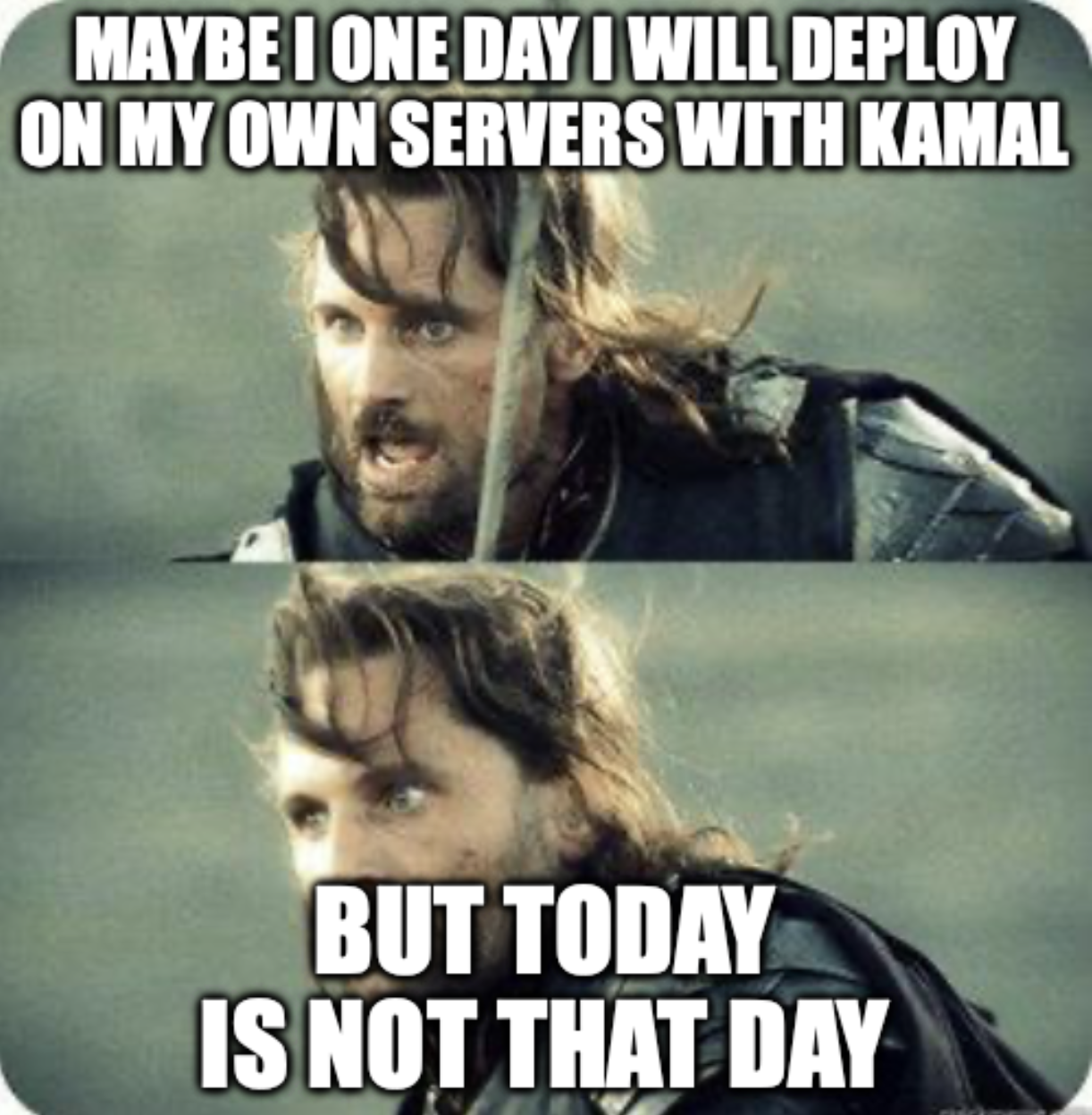
Rails 8 Solid Cache, Queue, Cable #
Rails 8 introduces Solid Queue, Solid Cache, and Solid Cable as built-in options for background jobs, caching, and real-time features. By default, these tools are configured to work with SQLite. If you want to use them with PostgreSQL on Render, check out my tutorial: Solid Trifecta with PostgreSQL
One of the coolest features of Solid Queue is its Puma adapter. When you set ENV["SOLID_QUEUE_IN_PUMA"] to true, jobs will run in the same process as your web app, reducing the resources needed!
Deploy to Render #
While you can manually create and connect services (Web, Worker, Database, Redis, etc.), my preferred deployment method on Render is using a render.yaml blueprint. This allows you to manage your entire Render deployment through a single file that’s committed to Git!
Here’s my render.yaml for deploying my Rails 8 Boilerplate app:
# render.yaml
databases:
- name: moneygun-db
region: frankfurt
ipAllowList: [] # only allow internal connections
plan: free
# plan: basic-256mb
# diskSizeGB: 1
services:
- type: web
name: moneygun-web
runtime: ruby
plan: free
# plan: starter
region: frankfurt
buildCommand: bundle install && bundle exec rails assets:precompile && bundle exec rails assets:clean && bundle exec rails db:migrate
# preDeployCommand: "bundle exec rails db:migrate" # preDeployCommand only available on paid instance types
# startCommand: bundle exec rails server
startCommand: ./bin/rails server
healthCheckPath: "/up"
envVars:
- key: SENSIBLE_DEFAULTS
value: enabled
- key: RAILS_ENV
value: production
- key: RAILS_MASTER_KEY
sync: false
- key: WEB_CONCURRENCY
value: 2
- key: SOLID_QUEUE_IN_PUMA
value: "true"
- key: DATABASE_URL
fromDatabase:
name: moneygun-db
property: connectionString
If you have a render.yaml file in your GitHub repository, you can add a one-click deploy button to your README!

Example script:
[](https://render.com/deploy?repo=https://github.com/yshmarov/moneygun)
More Render blueprint examples:
Render Pricing #
If you’re just getting started, the free plan will be sufficient to deploy an app to production.
You get a free web server:
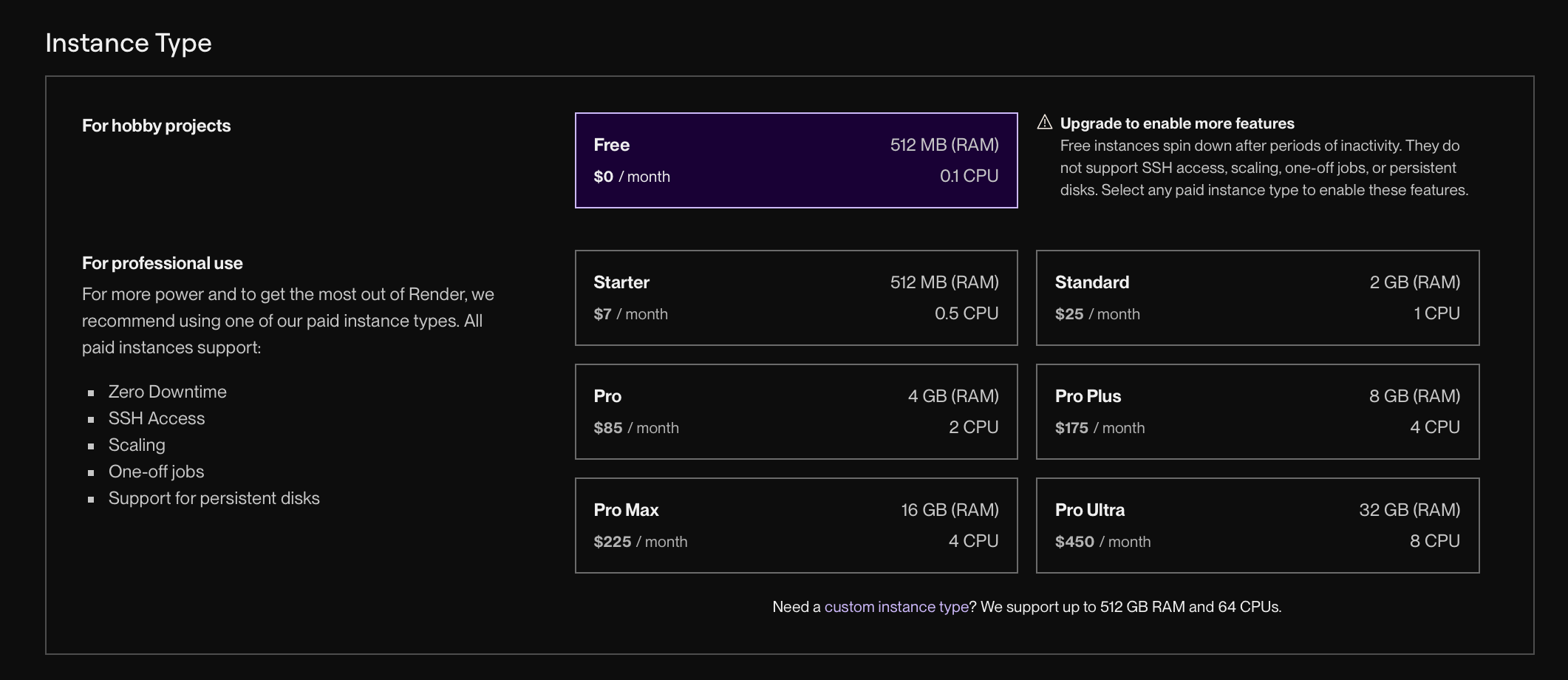
And one free database:

However, the free plan has limitations, and you won’t have access to features like rails console.
The basic plan ($6 + $7 = $13) would be enough to deploy a fully-featured web app with a database and Solid Queue worker to production.
🤠 That’s it! Time to move your apps from Heroku to Render!
Render vs Heroku #
- Render has Disks -> you can persist data across deploys!
- Render has 100 minutes HTTP request timeout (vs 30 seconds on Heroku)
- Render is cheaper when scaling
Here is a more detailed comparison of Render vs Heroku.
Additional Resources #
P.S. A big thank you to Render.com for sponsoring this article! It gave me the opportunity to dive deeper into deploying Solid with PostgreSQL and explore Render.
Did you like this article? Did it save you some time?